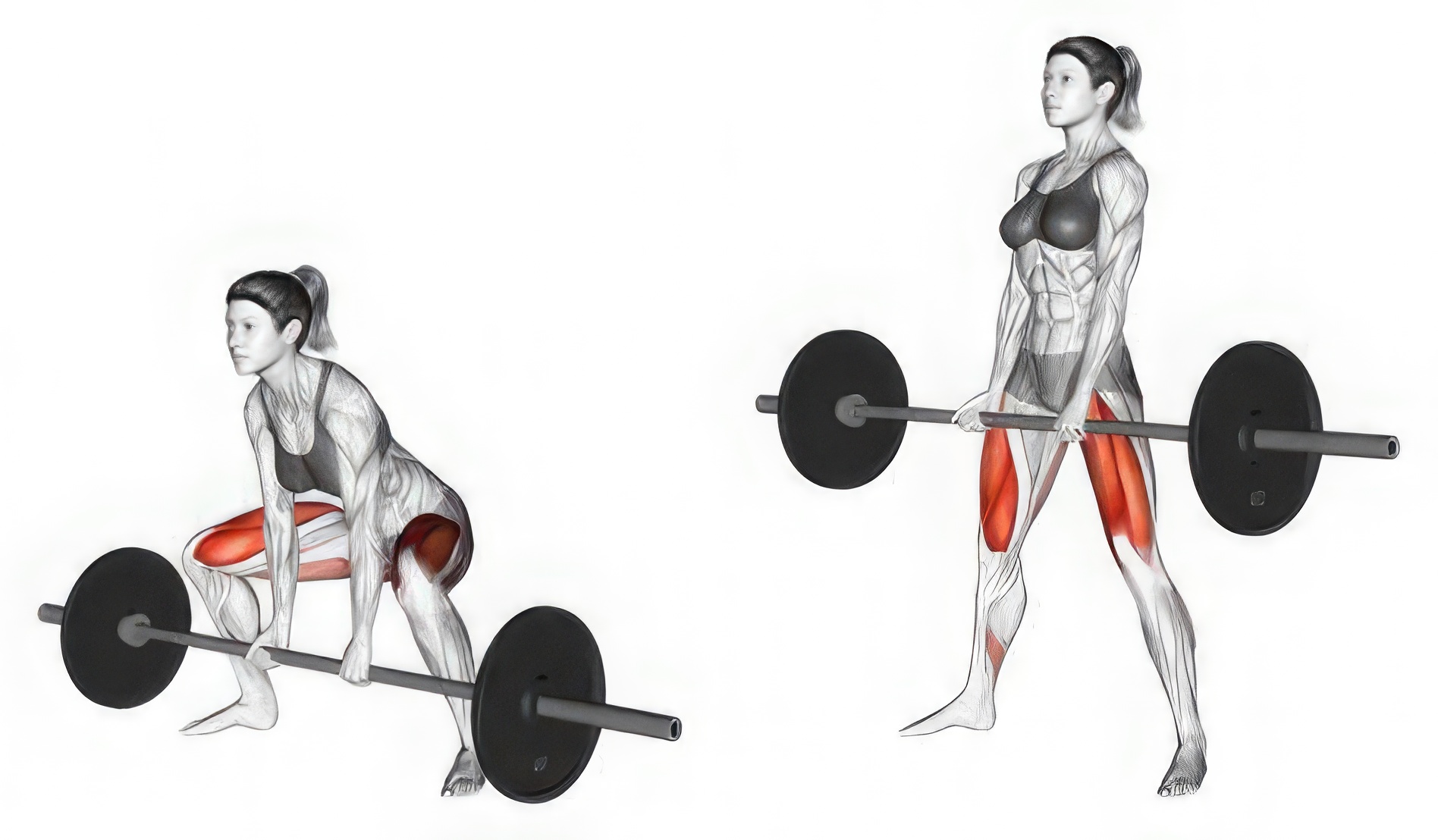
The Sumo deadlift form can be adjusted to your needs. It is a popular compound exercise in strength training, known for targeting the posterior chain, hips, and thighs.
Sumo Deadlift Forms and Movements
If you want to know more about the various sumo deadlift movements, here are some of the main forms and how to do them:
1. Traditional Sumo Deadlift
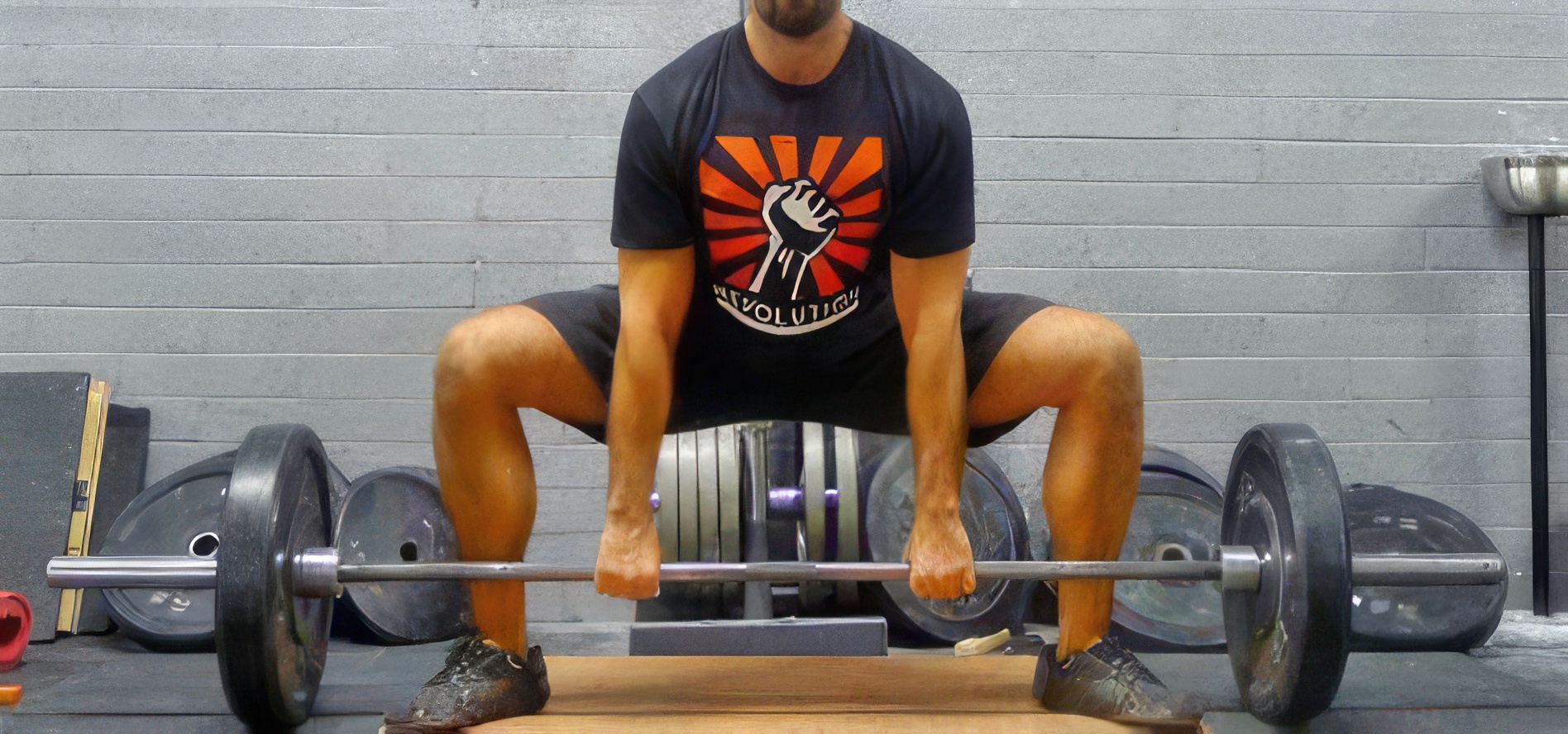
This is the standard version of the sumo deadlift. You can start by spreading your legs shoulder width apart. Position your toes facing outward. Then, hold the barbell and make sure your back is straight, hips down, and chest up.
Engage your core and drive through your heels to lift the bar while extending your hips. In one rep, you can lower the bar in a controlled manner. This variation is ideal for developing strength in the hips, glutes, and inner thighs.
2. Deficit Sumo Deadlift
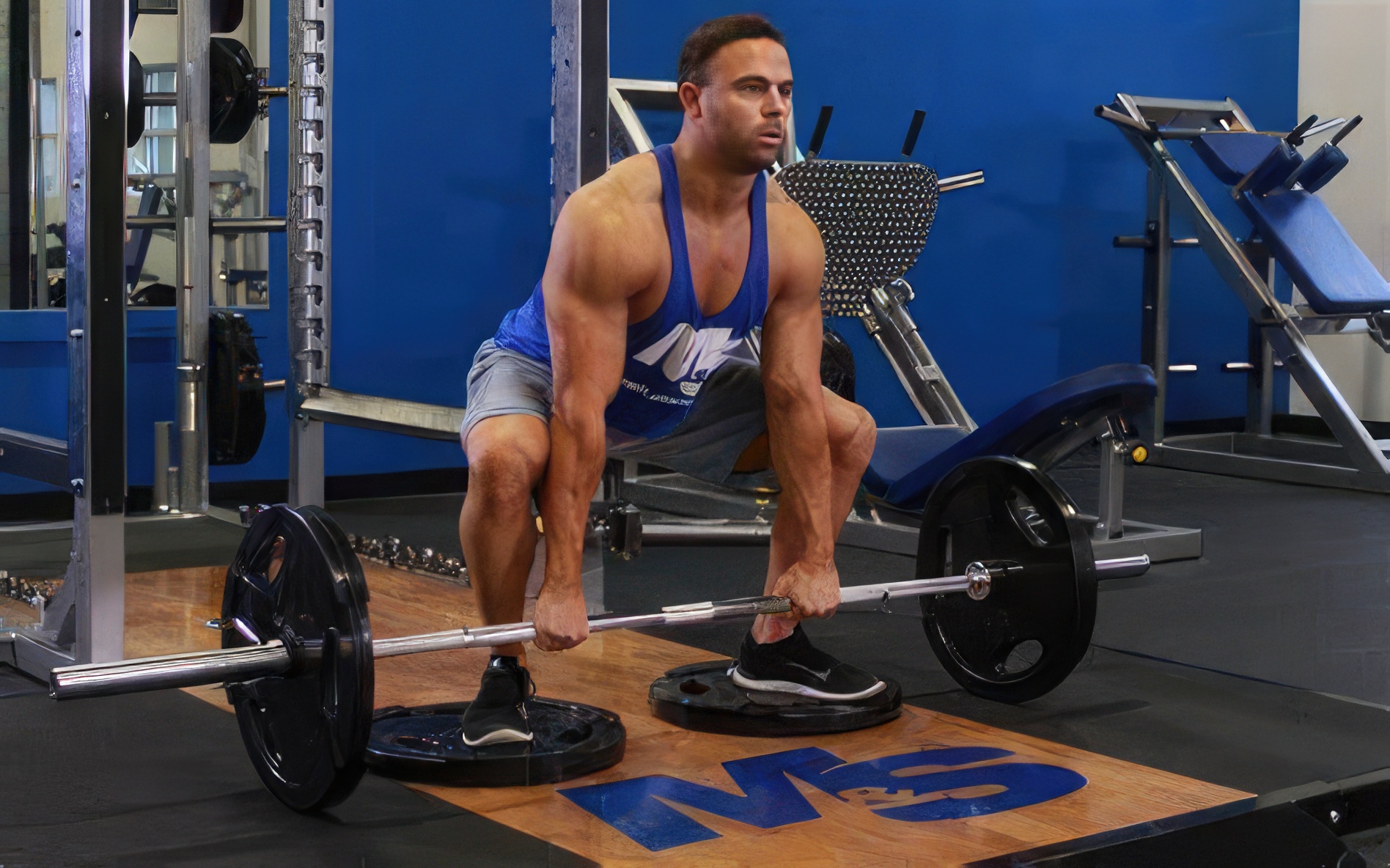
The deficit sumo deadlift involves standing on an elevated platform, usually 1-3 inches high. This can increase the range of motion and make lifting more challenging. It forces lifters to maintain proper form and build strength at the bottom of the lift. This variation is excellent for improving their explosiveness off the floor.
3. Paused Sumo Deadlift
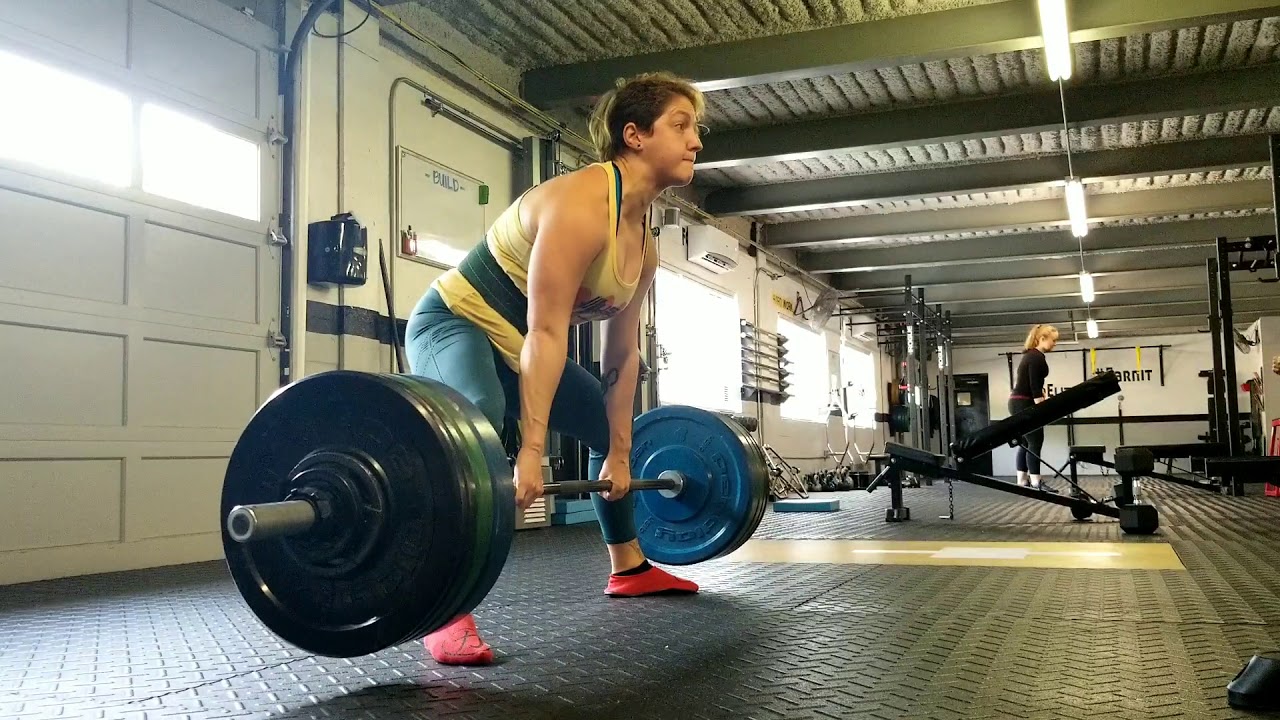
In this variation, the lifter pauses mid-lift, usually just above the floor, for 1-2 seconds before completing the movement. This trains strength in the sticking point, a common weak spot where many lifters struggle.
4. Block Pull Sumo Deadlift
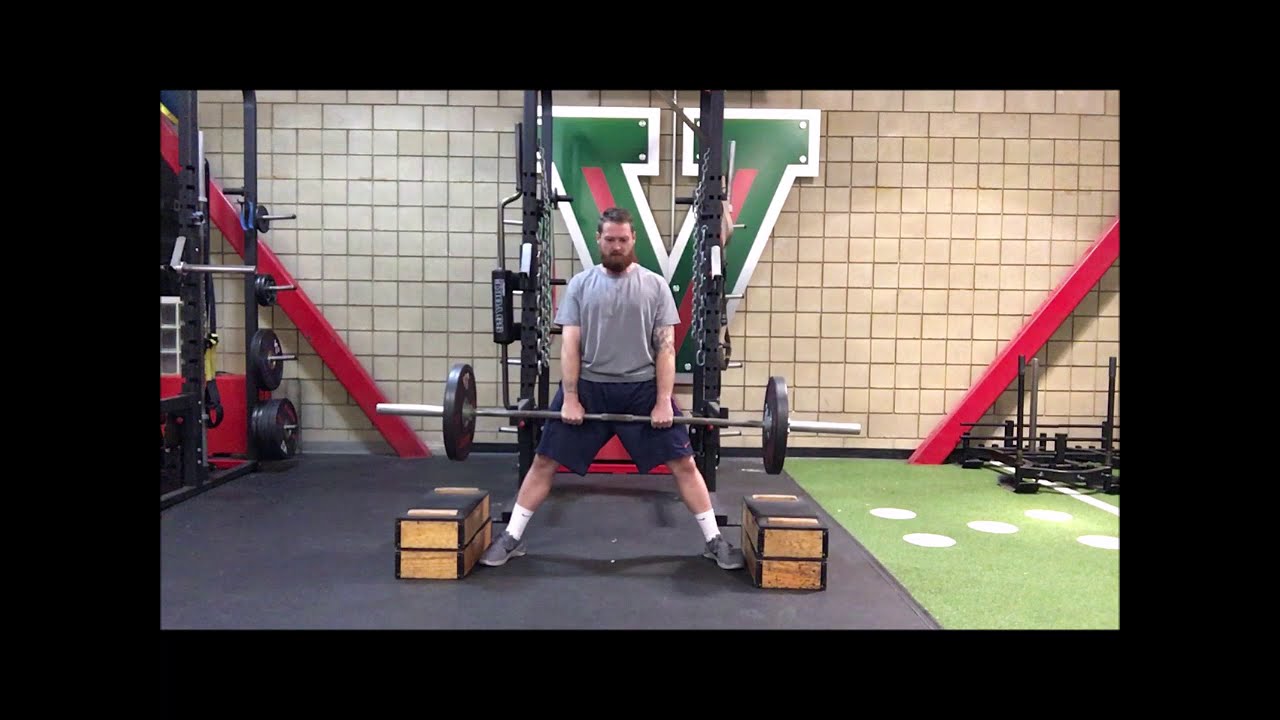
This involves pulling the barbell from an elevated surface, such as blocks or safety racks. The shorter range of motion targets the lockout portion of the lift and allows lifters to handle heavier weights. It is particularly useful for building strength in the upper back and glutes.
5. Sumo Deadlift with Resistance Bands or Chains
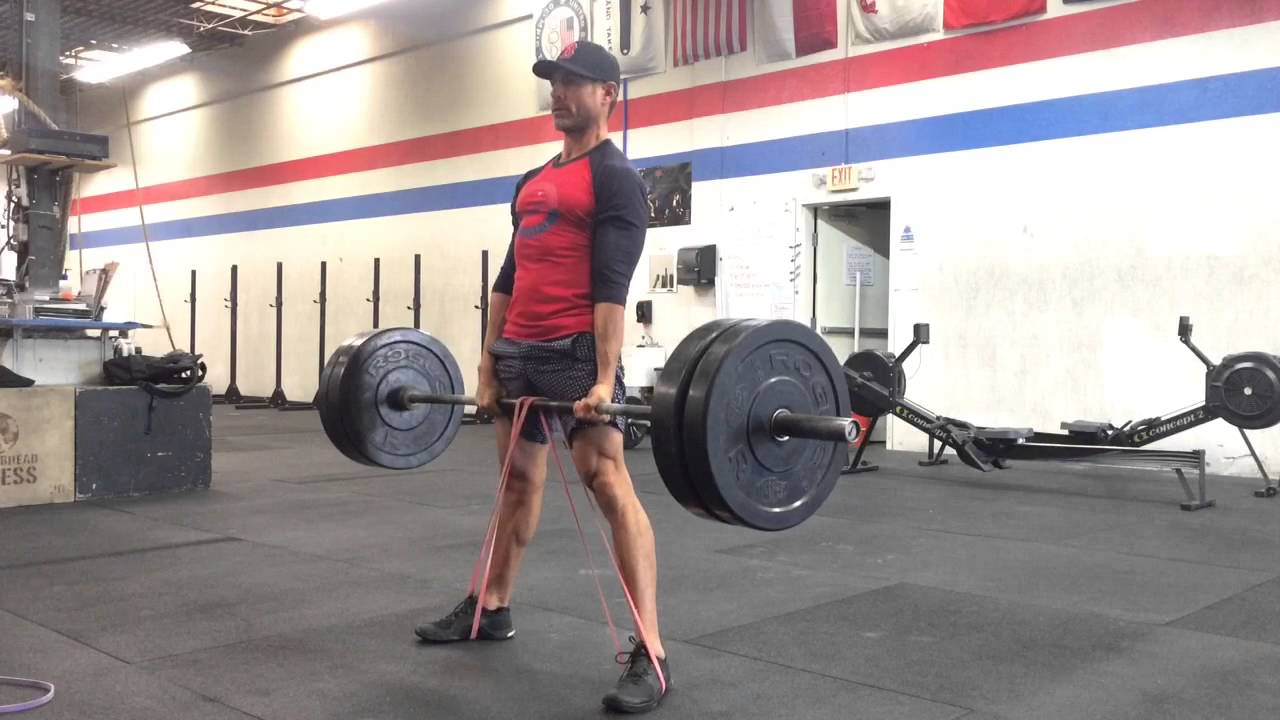
Adding resistance bands or chains to the barbell increases resistance as the bar rises. This variation is ideal for improving lockout strength and power, as it challenges lifters throughout the entire movement.
One of the forms of sumo deadlift that I often do is the traditional one. I think this is a simple movement that builds muscle strength in the hips and thighs. I also recommend this simple sumo deadlift for beginners.
Each sumo deadlift form has a specific purpose, whether to build strength, improve technique, or target weak points. You can vary the movement every day. Remember, you must avoid injury with proper form to experience the benefits.
FAQs
How wide should my stance be?
Your stance should be wider than shoulder-width, with toes pointing slightly outward. Adjust based on comfort and hip mobility.
Should my knees track over my toes?
Yes, your knees should follow the direction of your toes to avoid strain and maintain proper alignment.
How do I keep my back safe during a sumo deadlift?
Keep your spine neutral, chest up, and core engaged. Avoid rounding or hyperextending your back.
Is the grip different from a conventional deadlift?
Yes, the grip is closer, with hands positioned inside your knees instead of outside.

Guntur is a bodybuilding and powerlifting enthusiast. He is also the main author of this blog https://learn-bodybuilding.com/
Guntur also works as a Personal Trainer in his town.
In his free time, he likes to learn new languages and reading.
You can contact him from this website’s Contact Page.